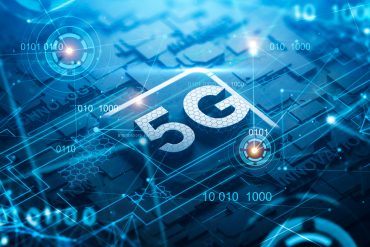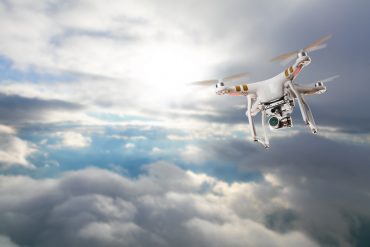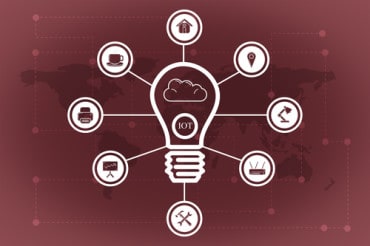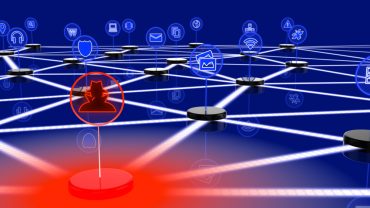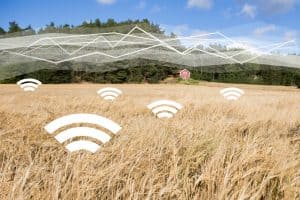
Smart farming, using advanced IoT technologies, helps farmers reduce waste and increase productivity.
In a milieu, when we are thrust in a situation where we must produce more food with fewer resources, every tiny advantage gets counted. And, this is where the Internet of Things (IoT) has proved its flair, delivering benefits, and increasing food production.
Smart farming, with advanced IoT technologies onboard, is exclusively designed to help farmers to reduce generated wastes and increase productivity. As a high-end technology for growing food, smart farming is a clean process and is sustainable for the masses. Also, the inception of modern information and communications technology (ICT) into agriculture has made the entire process much more effective and tenable.
See also: Farming Sensors Could Reduce Global Food Waste
There are several reasons to implement a smart agriculture solution into local as well as commercial farming. The adoption of the IoT has become common in most industries; the agricultural sphere would certainly not be an exemption in this regard. Right from examining and gathering data for soil precipitation, air temperature, air moistness, and sunlight intensity across an array of different fields, integration of IoT can enhance the effectiveness of water usage and improve the production of large and local farms alike. With the growing population in the world, farming and food production should also continue to rise with the drift. Economical sensors, data wavelength, and IoT platforms will spur up this increase in terms of efficacy, proficiency, and production.
Now, the question remains how exactly IoT gets applied to agriculture.
Basically, the IoT in agriculture focuses on bringing about data on yields and livestock, evaluating their health, and instigating solutions to respective issues more effectively than relying solely on human inputs. In a nutshell, the function of IoT in agriculture is to bring a circle of examination, supervision, decision making, and action into the farming procedure.
Firstly, sensors take exact measurements on an animal’s or a crop’s condition. This data is then accumulated and transferred onto a cloud platform where it is evaluated, and the endorsements are made depending on stipulated strictures or criteria. The huge amount of data is summarized and abbreviated into a format that can be easily construed by agronomists or automatic specks of technology. Suitable actions are made based on the same.
Increased efficiency is certainly the most obvious result, though. By having relevant and appropriate data at their fingertips round-the-clock, it is no longer a herculean task for farmers to make knowledgeable decisions on animal health or essential crop treatments. They can also predict harvests and organize related labor or logistics outlays. So, there’s hardly any doubt that IoT is closely related to automation, and accordingly, it leads toward less human inputs.
Among the benefits, knowledge is certainly the greatest advantage IoT brings to crop farming. By fitting and mounting multiple sensors throughout a field, a farmer has continuous access to essential statistics on weather forms, soil humidity, mineral levels, and the amount of light the plants are exposed to. This, in turn, paves the way for better irrigation as well as pollination costs. Likewise, it also saves a significant amount of money while also confirming the fact that the crops are being properly harvested.
Smart weather stations are the most common type of IoT device used in fields today. Gathering up accurate and precise data on weather conditions throughout the year, such stations send their data to the cloud. This way, a farmer not only is able to obtain the weather station’s factual data but also manages to collect all the past data, allowing analysis to spot trends and make future estimations for the area. This makes it also easier to make healthier decisions on crop cycle. Weather forecasts also happen to play a significant role in influencing a farmer’s choices about when to plant, spread on fertilizer, harvest, and so on. This results in lower waste and better yields while reducing the adverse effects of hostile weather. Furthermore, IoT is quite beneficial to fleet robotics and optimization. By doling out the proper information on the fields to connected vans, the total number of spins required to manure them can be significantly reduced.
Precision Agriculture
Precision agriculture, often known as precision farming, is a method or an implementation that makes the overall farming process more precise and specific for putting up livestock and harvesting crops. Increased use of Information Technology and items like sensors, self-directed vehicles, automatic hardware, rheostat systems, robotics, and more, are prime components. In the last few years, precision farming has turned out to be one of the most well-known applications of IoT in the agricultural sphere, and an array of business ventures have started to use this technique across the world. The products and services propounded by IoT systems take in soil moisture reviews, variable rate irrigation (VRI) development, and more. VRI optimization is a procedure that capitalizes on the viability of wet crop fields with the variability of soil, thereby boosting production and reinforcing water use efficiency.
Agronomy Drones
Agricultural drones are another example of IoT applications in agriculture. Nowadays, agriculture industries have come out as one of the major spheres where drones are used extensively. Two types of drones are being implemented in the process– aerial-based drones and ground-based drones. Right from the valuation of crop health to the evaluation of soil and fields, the benefits provided by drones are unparalleled in nature. Also, their ability to pep up production is an add-on. The drone technology is expected to provide the agriculture industry with a strong boost. They are especially useful in planning and strategy stages based on real-time data.
Smart Greenhouses
Greenhouse farming tends to improve the production of fruits and vegetables to a considerable extent. There are basically two ways greenhouses check on environmental constraints – either through manual interference or through relative control operation. Manual intrusion has certain disadvantages, such as product damage, energy mislaying, and labor cost. As such, these procedures are somewhat less effective. A smart greenhouse using IoT systems with no human intervention makes more sense. Different sensors assess the environmental constraints according to a plant’s requirements and are used for regulating the environment in a smart greenhouse.
Monitoring of Livestock
Finally, IoT applications help agriculturalists collect essential data about the well-being of their cattle. This information allows them to assess the real-time condition of their livestock. Ultimately, the viability of ranchers to track down their cattle with the help of IoT based radars abridges labor costs by a sizeable amount.
According to Allied Market Research, the global IoT in the agriculture market is projected to grow at a significant compound annual growth rate (CAGR) from 2018 to 2025. Incorporation of drones in agricultural efficiency and the rise in Internet-based technology have worked as the major factors driving the growth of the market. On the other hand, the fragmented agricultural market and high investment costs are expected to curb the growth to a certain extent. Nevertheless, the rise in public-private ventures and the increase in Internet penetration have almost modulated the factors, thereby paving the way for an array of opportunities in the industry.
In the last few years, deployment of IoT technology has been quite extensive, and with this trend, it’s projected that there will be a significant rise in agricultural productivity to meet the increasing demand for food. IoT in the agriculture industry boosts operational proficiency, capitalize on yields, and reduces energy waste. It accomplishes this using real-time field data assortment, data loading, and data examination. At the same time, different IoT-based applications such as precision farming, that keep a check on live assets, greenhouses, fish farms, and more, are anticipated to be very helpful in escalating the speed of the agriculture processes. Here, IoT technology again comes as a boon, as it can remit agriculture-based issues and heighten the quantity as well as the quality of agriculture production, by tethering farms through a solo platform and making them more intelligent by splitting, cumulating, and interpreting information. To sum up, the market for smart agriculture using IoT is growing at a quick pace, and in the next few years to come, it’s going to grow even more.


